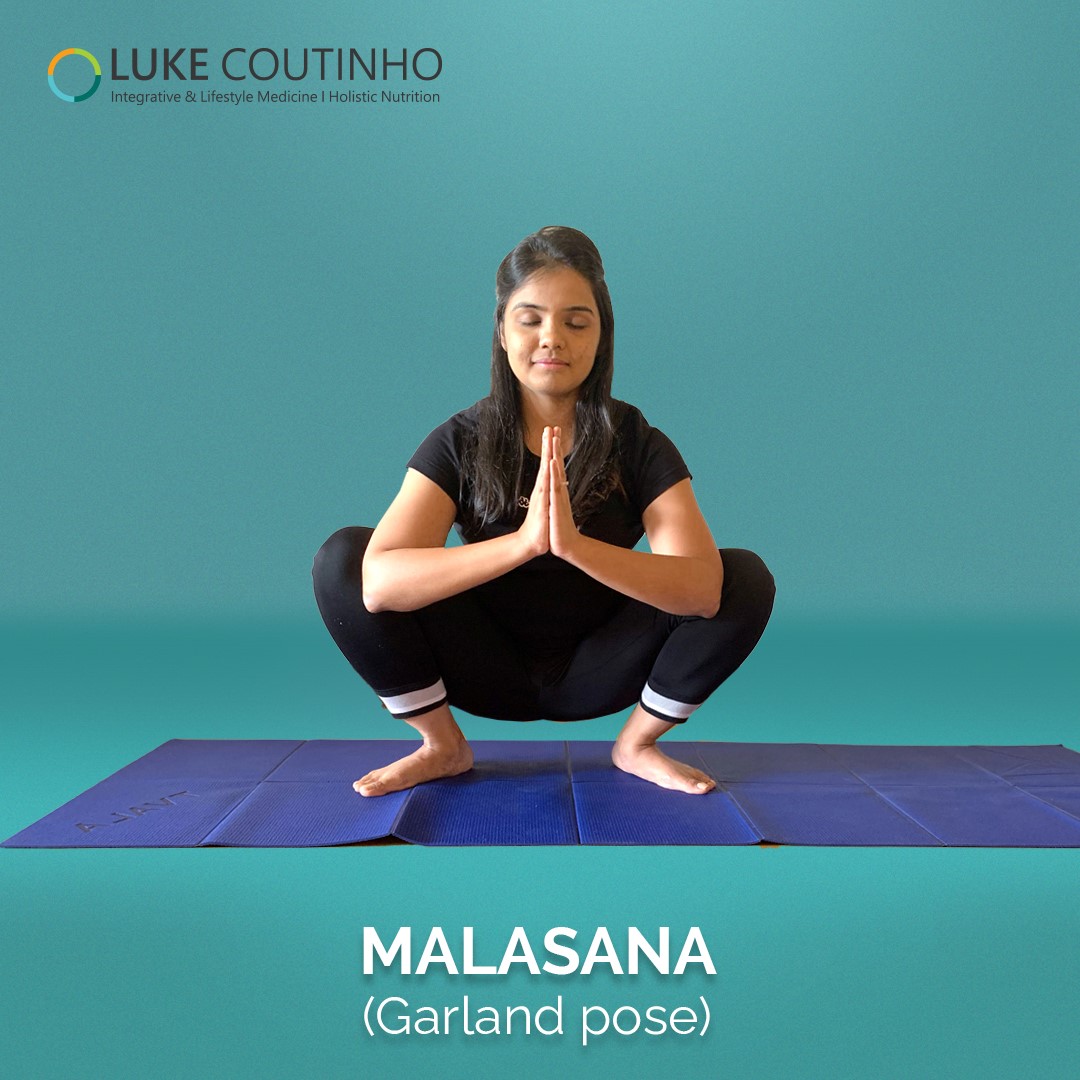Why do we join our hands when we say namaste?
Or sit on the floor when we eat?
Why do we avoid wearing footwear in our homes?
Almost every culture has different practices and rituals it has lived by and passed down through generations. When we study these closely, we realize the wisdom in them that helped our ancestors live happy and healthy lives.
Most of us live with high-end technology, convenience at the click of a button, and instant gratification, but we have forgotten these traditions. Yes, believing in science and medicine is good but don’t let it blind you to some of these simple practices that can work wonders for your health and longevity.
Table of Contents
ToggleHere are some top ancient Indian habits that you need to follow and revive within your families if you aren’t already practicing them.
#1 Keep your homes a footwear-free zone
It’s not cool to be sleeping or working on the bed with shoes on. The easiest way to carry dirt, viruses, bacteria, and germs into your home is via footwear. Have a shoe rack placed outside your home and a spare pair of slippers to wear at home, but make sure you leave the muck outside. It is not very difficult for harmful bacteria or germs to reach your intestine from the footwear you bring into your living space and create havoc. Imagine all the dirt we walk over with our shoes on – spit, garbage, poop, and whatnot. Keep your home a footwear-free zone to keep these contaminants out. Besides, connecting with the floor barefoot also grounds you.

#2 Sit down on the floor and eat
Sitting down also relaxes you and prepares your body to start a meal. When you pick your food, it makes you bend forward and move backward to eat. This gently massages your pancreas, stimulates digestion, and releases insulin. Standing is perceived as a fight and flight response. When you stand, your blood flow moves towards your extremities instead of your digestive system. Coupled with stress, it affects how your body digests, absorbs, and assimilates your food. Sit down cross-legged in the Sukhasana or padmasana posture, and ground yourself.
This simple act of folding your legs stimulates your lower spine, relaxes your mind, and improves digestion. Keeping your back straight while sitting cross-legged combats bad postures and the aches it brings. Try eating at least one meal sitting on the floor. If it is difficult for you, adopt the same posture on a chair and eat at the dining table. Right after your meal, sit in Vajrasana for at least 5 minutes.
#3 Bless your food
This is a simple act of gratitude. You can do this even if you are not religious. Blessing the food and offering a gratitude prayer before and after a meal helps you change the energy of food. Start your meal by blessing it to be nourishing, healing, recharging, and healthy. Once done, give thanks and be grateful for the food that you just ate.
#4 Eat with your hands
We need to break away from the notion that eating with our hands is demeaning. So many people shy away from truly enjoying their meals because they want to appear a certain way (read posh). Using your hands allows you to connect with food through all your 5 senses – smell, touch, taste, sound, and sight. It increases mindfulness and makes the entire experience of eating more wholesome, satisfying, and pleasurable. It also benefiting health, weight, and digestion in the process. It increases the satiety factor of your meal and reduces your tendency to overeat. The actions involved in eating have been derived from mudras (hand positions) that are the basis for yoga, meditation, and classical Indian dance, and directly benefit our chakras.
You will not experience the same connection with your food using forks, spoons, and knives as you do when you eat with your hands. An added benefit of using your hands is also they alert you about how hot your food is to avoid burning your tongue.
#5 Use sunshine as medicine
Do you take the time to expose yourself to natural sunlight out of your own will? Every single cell of our body requires sunlight. Colder countries where sunlight is next to nil manage it naturally as they are on a high-fat diet, and the body absorbs even the little Vitamin D they expose themselves to. Yet, despite having easy access to the power of sunshine, most of us don’t get that dose of natural Vitamin D we need. Go out and soak up some sun – both you and the kids. Even a 15-minute exposure is a great habit.
Back, neck, elbow, and leg pain, bone issues – inflammation is the root cause of most of these issues. While you change your diet and lifestyle to control it, please get 15 minutes of sunshine early morning or late evening. Stay away from the harsh sunshine. The infrared rays from the sun okay are your biggest antioxidants that help reduce inflammation and relieve pain. Use the sun on your skin the right way, it’s a powerful medicine.
#6 Practice Surya Namaskar
Surya Namaskars (sun salutations) were practiced thousands of years ago to worship the Sun. It consists of 8 asanas and 12 steps. Apart from offering prayer and gratitude, it is also a wonderful exercise. It involves all the parts of the body and helps to increase stamina, strength, and endurance with regular practice. Apart from strengthening your muscles, it also helps improve insulin control, metabolism, blood circulation, detoxification, digestion, hormonal balance, and mental health.
- Steps 1 and 12 – Pranamasana or the Prayer pose calms the mind, nervous system, and body as you begin your exercise.
- Steps 2 and 11 – Hastottanasana or the Raised arms pose improves flexibility, reduces back pain, and strengthens the spinal cord. It releases the tension around the neck muscles. It expands the lungs and their oxygen-carrying capacity, particularly beneficial for those with chronic throat problems.
- Steps 3 and 10 – Hasta Padasana or Standing forward bend strengthens the back, abdominal muscles, and nervous system. It stretches the calves and glute muscles. It increases the blood flow to the brain to improve memory and focus and to the abdomen to aid digestion.
- Steps 4 and 9 – Ashwa Sanchalanasana or Equestrian pose helps increase leg flexibility, stretches your spine, quadriceps, and hip muscles, and stimulates the abdominal organs.
- Step 5 – Chaturanga Dandasana or the Shoulder plank pose helps tone your wrists and legs and build arm muscles. It puts pressure on the core muscles and is excellent to reduce belly fat. It improves body posture and aligns your back muscles and spine in one straight line.
- Step 6 – Ashtanga Namaskar or the 8-Limbed pose strengthens the chest, arms, and legs. It is beneficial for lower abdominal organs and balances the whole body.
- Step 7 – Bhujangasana or Cobra pose helps reduce headaches and backache. It relieves tension from the neck, back, and spine. It promotes spine flexibility and improves posture, thereby helping prevent slipped discs.
- Step 8 – Adho Mukha Svanasana or Downward facing dog pose has multiple benefits like stress relief, improved circulation, enhanced respiration, better posture, and so on. It makes your arms and legs stronger and relieves varicose veins. It also stretches the calf and spine muscles.
Do this daily. Focus on your posture at every step. Do not be in a rush to do more rounds without mastering each step. Be consistent with the practice.

#6 Namaste
Joining your hands brings balance to the left and right sides of the brain, encouraging them to function in harmony. During the pandemic, the simple tradition of namaste went viral on the global stage as leading world leaders adopted it to greet each other due to the social distancing norms. In India, Namaste signifies respect and love for the people we greet. This gesture in yoga is also known as the Anjali mudra where the tips of our fingers are considered to be energy points. Bringing your palms together stimulates your brain to feel grounded and calm, and have a sense of well-being.
#7 Eat early dinners
Your body doesn’t care about your late-night party or working shifts at the office. It works according to the laws of nature and thrives only when you align it to your circadian rhythm. Late-night meals are a burden for your body to digest and assimilate nutrients. As the sun sets, your body goes from feed and breed to rest and digest mode. Your pancreas struggles to secrete digestive enzymes late at night. It may explain why you wake up feeling puffy, bloated, sluggish, heavy, and acidic after a night of eating late. It is because your body was unable to finish the process of digestion.
Am I asking you to give up socializing and living your life? No. But be smart about it. Eat your dinners close to sunset for at least 5 days a week. Try aligning and respecting your body and its needs first. Go back to your roots. You will notice how even our ancestors ate their last meal close to sunset because of the lack of natural light in the absence of electricity. On several days, they socialized and celebrated festivities, sang songs and made merry, and still lived healthy and happy lives. You can do it too, with discipline and consistency.
#8 Cook in earthenware
Ancient India extensively used clay or earthenwares. It is one of the healthiest substances to use for cooking, eating as well as storing water. You may come across clay matkas in many rural Indian households which keep the water naturally cool because clay is porous. It is refreshing in the summer and also great for those who wish to have cold water, but struggle with a cold or sore throat when they have refrigerated water.
Clay matkas change the pH of the water to make it more alkaline when compared to water stored in glass or plastic bottles. Drinking water out of clay pots or matkas is satisfying because it helps you connect with the earth. Since the earth is mineral rich, these leach into the water or the food and nourish us. One thing to note is pure earthenware will leak and become moist on the outside. If it doesn’t, this means it has been lined and glazed to prevent leaking and is not the right quality.
#9 Chant Aum
OM or Aum is considered a primordial or universal sound, the seed of all words without reference to any specific religion or God. It is not just one sound, but three. Different syllables vibrate at different sound frequencies and resonate with different organs. In Sanskrit, ‘O’ is a diphthong sound formed by combining the two sounds ‘A’ and ‘U’. At a physical level, the Aum syllable addresses the whole of the human sound instrument: we open the mouth (‘a’), move the lips closer to each other (‘u’), and then close the mouth (‘m’). This activates the larynx fully.
- The first sound is produced in the back of the throat. You experience these vibrations around your navel and abdominal area.
- The second sound in aum is produced at the lips. You experience its vibrations in and around your chest cavity.
- The last audible is produced by closing the lips and vibrating the sound upwards. You experience the vibration in and around your throat. It also activates the face and the brain.
How does it benefit you?
- Sound is Energy. When you chant aum, especially in a group, not only do you experience the sound vibrations and frequencies at a cellular level but amplify its effect to produce positive vibrations that charge the area around you.
- The aaa sound helps to strengthen the spinal cord as it is produced deep within the abdominal muscles.
- The uuu sound produced by the vocal cords strengthens them and improves your voice. It also benefits your thyroid gland and throat.
- The vibrations you feel in the sinuses help open them up and clear the airways.
- Benefits heart health by promoting relaxation, stabilizing blood pressure, and regularizing the rhythm of your heartbeats.
- Improves concentration, gives peace and steadiness to our mind, reduces mental stress, and clears all distracting thoughts.
- Scientists who analyzed Magnetic Resonance Imaging scans (MRI) to investigate the effect of chanting the Aum mantra found its consistent chanting stimulates the parasympathetic system resulting in a relaxation response. This can be effectively used in the treatment of depression and epilepsy.
- It also helps develop intuition, enhance creativity, increase the energy level in the body and improve performance at the workplace.
- Brings clarity to thought, increased self–awareness, and a greater ability to be associated with the world. It restores the balance of the body at the physical, mental, emotional, and spiritual levels.
#10 Try the Indian Squat
It may surprise you, but Indian toilets are more hygienic than Western ones. No part of your body makes direct contact with the Indian toilet seat, thus reducing the risk of urinary tract infections (UTIs) compared to western commodes.
Using Indian toilets is like doing a squat exercise. In yoga, it is known as Malasana or the Garland pose. It strengthens your legs and improves bowel movement. The asana stretches your thighs, groin, hips, ankles, and torso, toning the abdominal muscles, and improving the function of the colon to help with elimination. The posture also boosts sexual health by increasing blood circulation to your pelvis. Indian toilets benefit pregnant women by squatting and preparing the muscles for smooth and natural deliveries. Know more about the benefits of Malasana here.

The bottom line
If you are following most of these, great. If you are not, start with at least two of these practices and then build it up. Advancement and technology are required for the world to move forward. But don’t let it blind you from using the experience and wisdom of your ancestors to transform your life and health.
Want to learn more ancient Indian tradition and wisdom, get your copy of my book Back to the Roots with Tamannaah here.
RELATED READINGS
The Importance of Using the Right Cookware
Drinking Water Out of a Copper Vessel? Here’s What You Should Be Careful of
The Great Indian Probiotic: Make THIS at Home for Good Gut Health
4 Indian Recipes To Keep You Warm and Healthy This Winter
Luke Coutinho
Luke Coutinho practices in the field of Holistic Nutrition and Integrative and Lifestyle Medicine. He is the pioneer and founder of the You Care Wellness Program which has consulted and treated over 20,000 patients globally. This integrative lifestyle program revolves around five fundamental pillars - Cellular Nutrition, Adequate Exercise, Quality Sleep, Emotional Detox, and the Spirit. It has now stemmed into a beautiful community with over a million people. His free videos, blogs, challenges, and programs have helped people reverse lifestyle conditions, put cancers into remission, and overcome suicidal tendencies to live happier lives. Luke has authored four bestsellers and won several national and international awards. He is the Champion for Lifestyle and Wellness for PM Narendra Modi’s Fit India Movement. He is the founder of India's first ethical wellness platform, You Care Lifestyle, where all things are verified by Luke and his team. He is also the founder and chief program mentor for Integrative Nutrition and Dietetics courses at the Lifeness Science Institute (LSI). He travels the world to speak on holistic wellness and empower people to live their most extraordinary life.
Start Your Wellness Journey
Feeling inspired to take the next step in your wellness journey? Connect with us to explore how our tailored programs can support your health journey. Your transformation is just a conversation away.



